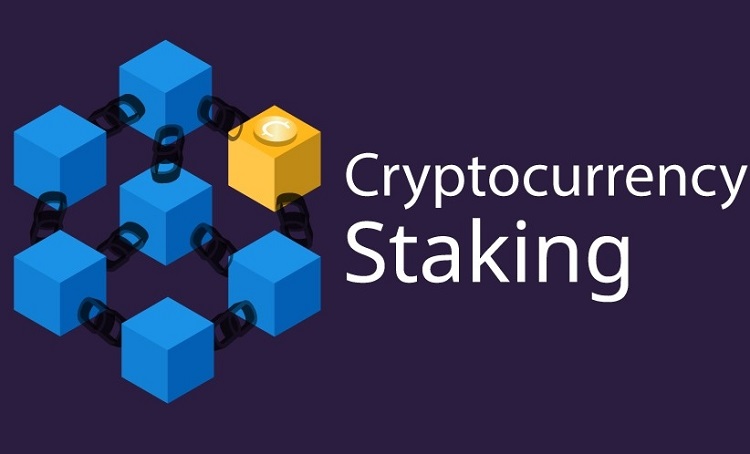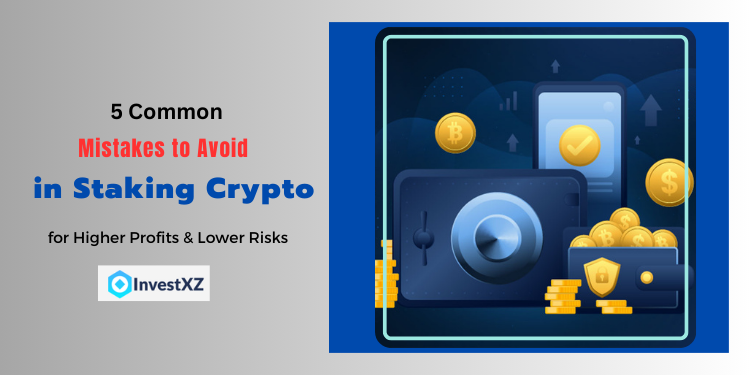Staking in crypto is the process of locking your cryptocurrencies to support network security, and you will earn passive rewards from this. It is similar to a form of savings deposit in crypto, however, staking still has risks and there are mistakes in staking crypto that cause investors not to receive high profits, even at a loss. So what are the common mistakes in staking crypto and how to prevent them, then you should see the detailed information right below.
Contents
- 1 5 common mistakes to avoid when Staking crypto 2025!
- 1.1 Misunderstanding about staking crypto with high APR/APY
- 1.2 Mistake in staking crypto #2: Choosing the First Validator on the List
- 1.3 Mistake in staking crypto #3. Not Knowing How to Choose a Validator
- 1.4 Mistake in staking crypto #4: Choosing the Easiest Staking Feature
- 1.5 Mistake in staking crypto #5: Paying Excessive Commission
- 1.6 What is the Safest Way to Stake Crypto?
- 1.7 Which Crypto Yields the Highest Profit from Staking?
5 common mistakes to avoid when Staking crypto 2025!
Misunderstanding about staking crypto with high APR/APY
When you participate in staking a certain crypto, the main figure you often care about is APR (Annual Percentage Rate) or APY (Annual Percentage Yield). There are many staking platforms that attract users by advertising cryptos with very high APR/APY.
However, APR is often unrealistic numbers, supported by tokens with high inflation rates to pay for profits.
Tokens with APR profits when staking up to 100% seem like an attractive deal, but these are often from newly issued tokens.
The problem is that these new tokens are often sold by the people who receive rewards from staking. This causes the price of the crypto to go down, and even though you may have earned 100% APY in the year, the deep drop in token price can also cause losses.
The interest rate from staking crypto will be adjusted over time depending on the inflation rate of the token. Investors should consider their actual profits (interest rate adjusted for token inflation) to calculate how much they actually earn.
To see the adjusted interest rate, you can visit StakingRewards.com.
Note: High yields often do not last long. With new projects, there is often high APR, however, it will gradually decrease over time. Investors need to understand that when a new network needs to encourage users to stake their cryptos. As more investors do this, staking profits will decrease over time as more tokens are staked and the staking rate increases.
So, what is the correct way to analyze staking crypto profits?
Below are some ways to determine the most profitable cryptocurrency for staking:
-
Research which cryptocurrency is currently yielding the highest staking profit from websites like stakingrewards.com.
-
Look at the ‘Adjusted Profit’ column on the website to determine which asset gives you the best inflation-adjusted profit.
-
From the top 10 cryptos in the list, choose the crypto that suits your investment strategy and risk tolerance.
-
Follow the step-by-step instructions in “How to Stake” for the selected asset to start your staking journey.
It’s important to remember that Staking is a long-term investment strategy. Diversifying your staked assets across multiple cryptocurrencies and networks can help minimize risk and increase profits. Additionally, it’s always wise to keep an eye on market conditions and update your research regularly.

Mistake in staking crypto #2: Choosing the First Validator on the List
Platforms require stakers to choose a Validator (verifier) before they stake their crypto. Investors often choose the first one on the list or the Validator with the highest value and users staked. There are 2 problems with this approach:
The first Validator in the list might be the platform’s own Validator (the Network also stores its own Validators), which contributes to the centralization of the network.
It could be a random Validator at the top of the list. This is not the best verifier to choose to maximize your crypto staking rewards.
Mistake in staking crypto #3. Not Knowing How to Choose a Validator
Choosing a Validator is one of the most important steps in staking your crypto. It’s similar to choosing a reputable bank to deposit your savings, for example.
The challenge in choosing a staking crypto service provider is twofold:
-
It’s difficult to determine which provider will be trustworthy in the future.
-
In most cases, it’s necessary to clarify whether a particular company follows best practices in the industry.
The quality of the Validator will play a role in your staking rewards. Since your crypto will be locked there for a long time to earn attractive interest, if you choose a non-reputable validator, your crypto could be locked without repayment, for example.
In addition to assessing the actual Validators and the development team behind them, the main on-chain figures to pay attention to are:
+ Low commission: Remember that the commission rate is the % of your staking rewards transferred to the Validators. Don’t let Validators lure you with a 0% commission fee only to delegate your crypto to them and then change the commission without you knowing.
+ The Validator must be in the active group: Validators in the active group are those earning rewards from staking crypto.
+ Voting Power > 0%: The voting percentage represents the weight the Validator holds in making governance decisions on the network. Typically, investors don’t want to choose the Validator with the highest voting power (as this makes the network more centralized) and they also don’t want a Validator with 0% voting power.
Delegators > 0: A Validator might be more popular or trustworthy if it has more delegators than others.
Self-stake > 0%: Remember that the higher the amount staked by you to the Validator, the more benefits the Validator receives and it may prevent them from acting maliciously with your money.
Mistake in staking crypto #4: Choosing the Easiest Staking Feature
Investors often tend to choose the easiest staking strategies that do not require much effort to learn. In this case, you can imagine the easiest staking as choosing to stake right on your own cryptocurrency exchange.
This is considered a bias of investors and it prevents them from maximizing their profits from staking crypto. Investors need to understand the difference between custodial and non-custodial staking to make an informed decision:
What is Custodial Staking?
Custodial staking means you are staking your cryptocurrency through a centralized entity (e.g., Binance, Kraken, Coinbase). The exchange oversees your assets and you entrust the management of your private keys to the exchange. Additionally, you relinquish control of your assets to the platform and must adhere to its terms and conditions.
What is Non-Custodial Staking?
Non-custodial staking means you have sole control over your private keys. This means you control your cryptocurrency and oversee your own assets without going through any centralized entities.
An example of non-custodial staking is when you stake through wallets like Metamask, Trust Wallet, or hardware wallets like Ledger, Trezor…
Mistake in staking crypto #5: Paying Excessive Commission
The commission rate is used by staking crypto providers as a payment for their verification services. Depending on the platform, the fees may not be transparent.
Assume an investor chooses a random Validator without thorough research. In this case, they might fall into the trap of paying an excessively high commission rate to the Validator. Some staking crypto platforms take advantage of this and charge a huge fee for their staking service, which end-users often do not realize.
You will need to check fees such as:
- Commission fees
- Network fees
Paying fees on staking crypto platforms is not necessarily bad, however, make sure you know what you are paying and whether you are willing to pay for those services.
Commission fees usually range between 5–10% depending on the platform. Pay attention to Validators within that range.

What is the Safest Way to Stake Crypto?
The safest way to stake crypto will depend on your risk tolerance and specific investment strategy. However, there are some general guidelines that can help you minimize risks such as:
+ Use a cryptocurrency wallet that you manage yourself like Metamask, Ledger, or Trust…
+ Choose a reputable staking crypto platform, for example, one that has been operating for many years in the industry, has a good reputation, and certain achievements.
+ Make sure you understand the risks associated with staking crypto, such as the possibility of a reduction in % profits and have a clear plan to manage those risks.
+ Regularly check the status of your staked assets and the performance of the network to ensure everything is working as expected.
Which Crypto Yields the Highest Profit from Staking?
Currently, some cryptocurrencies that yield high profits from staking include Cosmos (ATOM), Polkadot (DOT), Algorand (ALGO), and Eos (EOS).
The profit from staking an asset depends on specific factors of the network. It is important to note that the cryptocurrency market is very dynamic and interest rates may change over time, so you should always research and stay updated with the latest market conditions.
Related post:
- 10 Low supply coins with high potential for Long-term investment
- TOP platforms supporting Airdrop cryptop hunting and whitelisting
Above are the common mistakes in staking crypto that you should be aware of to avoid and potentially reduce risks, earning the highest profits. If you have any questions, feel free to leave a comment below to be answered within 24 hours. Wish you success.


























